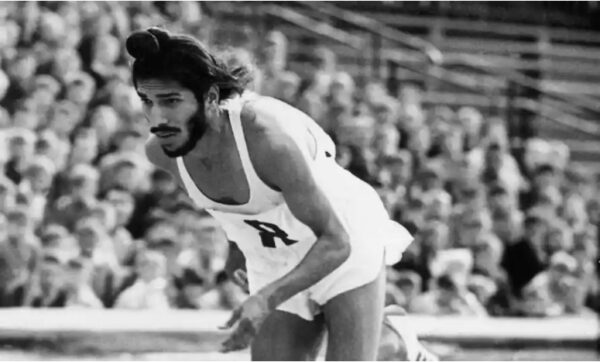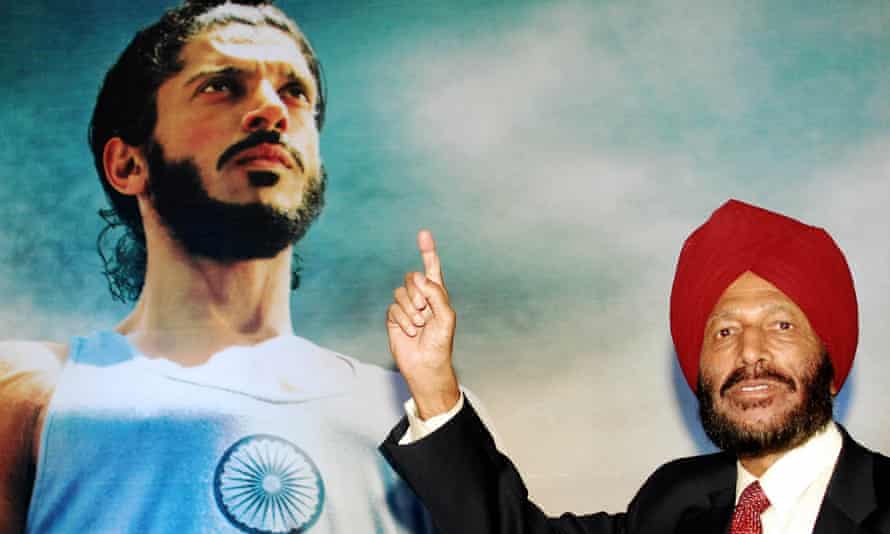
Milkha Singh saw his own family killed in mob violence during the partition of India in 1947, yet rose to become one of the outstanding 400-metre athletes of his generation. Photograph: AP
Source:Theguardian
One of India’s greatest track athletes, known as ‘the Flying Sikh’, who won gold at the 1958 Commonwealth Games
One of India’s greatest track athletes, Milkha Singh, who has died aged 91 of Covid-19, was known as “the Flying Sikh” in recognition of his running achievements. He was the first representative of independent India to win a gold medal at the British Empire and Commonwealth Games, in Cardiff in 1958, when he won the 440 yards, having taken gold medals at 200 and 400 metres in the Asian Games in Tokyo earlier in the year.
By 1960, Singh was expected to be among the medals at the Rome Olympics. He had looked superb in winning the AAA Championships that year at White City, ahead of GB’s Robbie Brightwell, and he knew he was in great form. Singh was going well in the final but, as he approached the home straight, he deliberately eased back fearing he had gone too fast to that point. Momentum lost, he finished only fourth, and always regretted what might have been.
Nevertheless, the time he recorded in the race, 45.6 seconds, was an Indian national record that stood for nearly 40 years.
As a boy Singh had literally had to run for his life when caught up in the riots surrounding the partition of India in 1947, and his extraordinary story was featured in the hit Bollywood film Bhaag Milkha Bhaag (2013), which translates as Run, Milkha, Run. These, Singh said, were the words screamed by his father when he, his mother and other family members were hacked to death by a mob during the terrible violence of that time.
One of 15 children, Milkha was born to a Sikh farming couple, Sampuran Singh and Chawali Kaur, in what was then Gobindpura, a remote Punjabi village now located in Pakistan. Singh recalled in his 2013 autobiography, Race for My Life, co-written with his daughter Sonia Sanwalka and on which the film was based, that the family had been told: “Convert to Islam or prepare to die.”
After first hiding in the jungle with other boys, the teenage Singh boarded a train and was able to escape across the border and travel to Delhi, where he lived on the railway station for a month before eventually tracking down an older sister with whom he was able to stay for a time, as well as spending time in refugee camps.
He admitted he thought of turning to a life of crime before joining the army in 1952 after several attempts, probably aided by the fact that his older brother Malkhan was a serving soldier. It was then that his running talent was identified and encouraged, and Singh began to develop into one of the outstanding 400-metre athletes of his generation.
“I renounced all pleasures and distractions to keep myself fit and dedicated my life to the ground where I could practise and run,” he said. “Running had thus become my god, my religion and my beloved.”
His competitive progress earned him selection to represent India in the 1956 Melbourne Olympics where, despite failing to progress beyond the heats, he had the chance to meet the gold medallist Charles Jenkins. Singh learned the American’s training methods and vowed to emulate his achievements.
In 1960, before Rome, Singh was prevailed upon by the Indian prime minister, Jawarharlal Nehru, to run the 200m in an international meeting in Lahore. Singh was apprehensive, as he had not been across the border since partition, but, persuaded by Nehru, he went, and won his race.
As the president of Pakistan, General Ayub Khan, presented him with a gold medal, he said: “Milkha, you came to Pakistan and did not run. You actually flew. Pakistan awards you the title of the Flying Sikh.”







